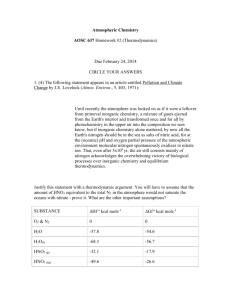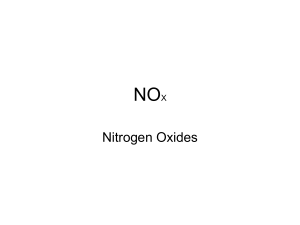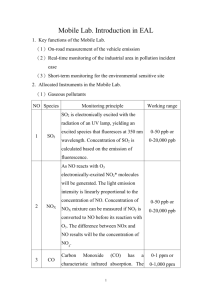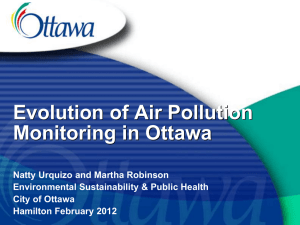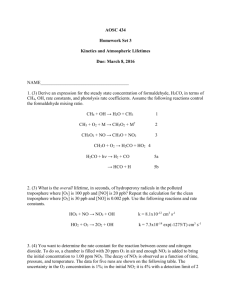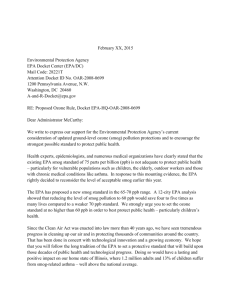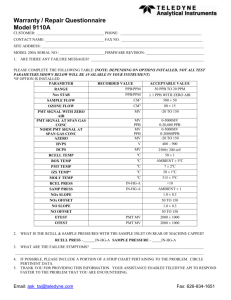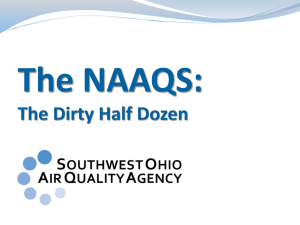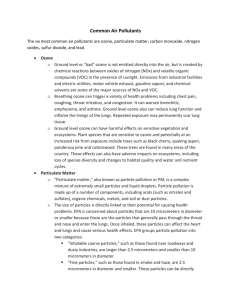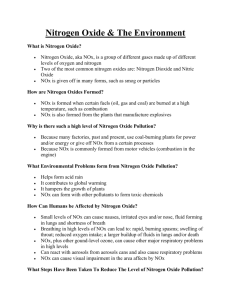Nitrogen oxides
advertisement
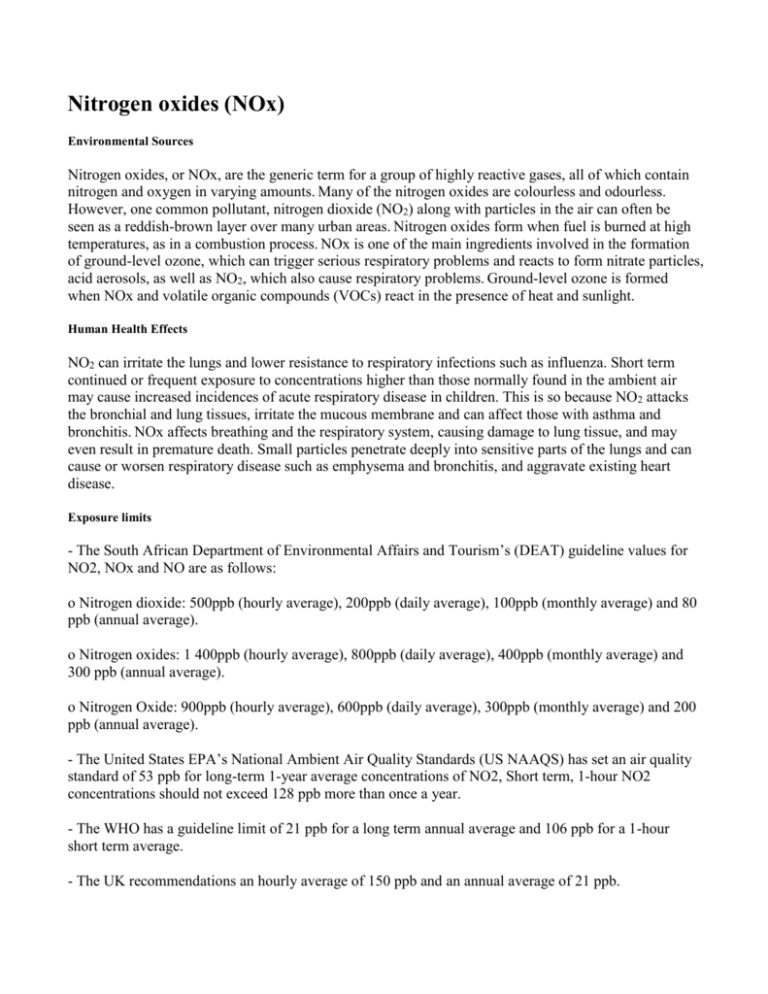
Nitrogen oxides (NOx) Environmental Sources Nitrogen oxides, or NOx, are the generic term for a group of highly reactive gases, all of which contain nitrogen and oxygen in varying amounts. Many of the nitrogen oxides are colourless and odourless. However, one common pollutant, nitrogen dioxide (NO2) along with particles in the air can often be seen as a reddish-brown layer over many urban areas. Nitrogen oxides form when fuel is burned at high temperatures, as in a combustion process. NOx is one of the main ingredients involved in the formation of ground-level ozone, which can trigger serious respiratory problems and reacts to form nitrate particles, acid aerosols, as well as NO2, which also cause respiratory problems. Ground-level ozone is formed when NOx and volatile organic compounds (VOCs) react in the presence of heat and sunlight. Human Health Effects NO2 can irritate the lungs and lower resistance to respiratory infections such as influenza. Short term continued or frequent exposure to concentrations higher than those normally found in the ambient air may cause increased incidences of acute respiratory disease in children. This is so because NO2 attacks the bronchial and lung tissues, irritate the mucous membrane and can affect those with asthma and bronchitis. NOx affects breathing and the respiratory system, causing damage to lung tissue, and may even result in premature death. Small particles penetrate deeply into sensitive parts of the lungs and can cause or worsen respiratory disease such as emphysema and bronchitis, and aggravate existing heart disease. Exposure limits - The South African Department of Environmental Affairs and Tourism’s (DEAT) guideline values for NO2, NOx and NO are as follows: o Nitrogen dioxide: 500ppb (hourly average), 200ppb (daily average), 100ppb (monthly average) and 80 ppb (annual average). o Nitrogen oxides: 1 400ppb (hourly average), 800ppb (daily average), 400ppb (monthly average) and 300 ppb (annual average). o Nitrogen Oxide: 900ppb (hourly average), 600ppb (daily average), 300ppb (monthly average) and 200 ppb (annual average). - The United States EPA’s National Ambient Air Quality Standards (US NAAQS) has set an air quality standard of 53 ppb for long-term 1-year average concentrations of NO2, Short term, 1-hour NO2 concentrations should not exceed 128 ppb more than once a year. - The WHO has a guideline limit of 21 ppb for a long term annual average and 106 ppb for a 1-hour short term average. - The UK recommendations an hourly average of 150 ppb and an annual average of 21 ppb. Sources & Links: www.ceroi.net/reports/durban/issues/air/guidelin.htm http://www.epa.gov/ttn/catc/dir1/fnoxdoc.pdf http://www.epa.gov/air/nitrogenoxides/ http://yosemite.epa.gov/ochp/ochpweb.nsf/content/homepage.htm http://www.epa.gov/reg5oair/naaqs/noxfldr.pdf
